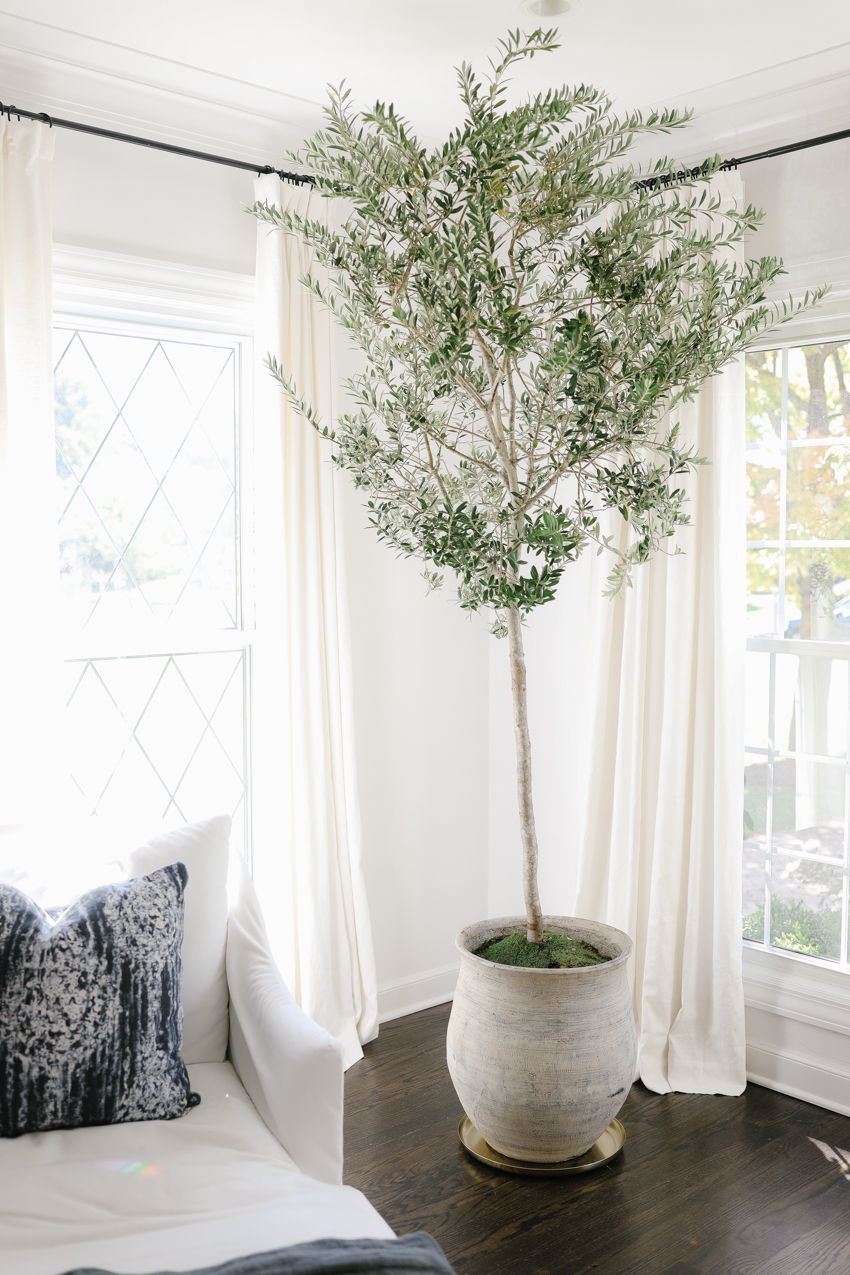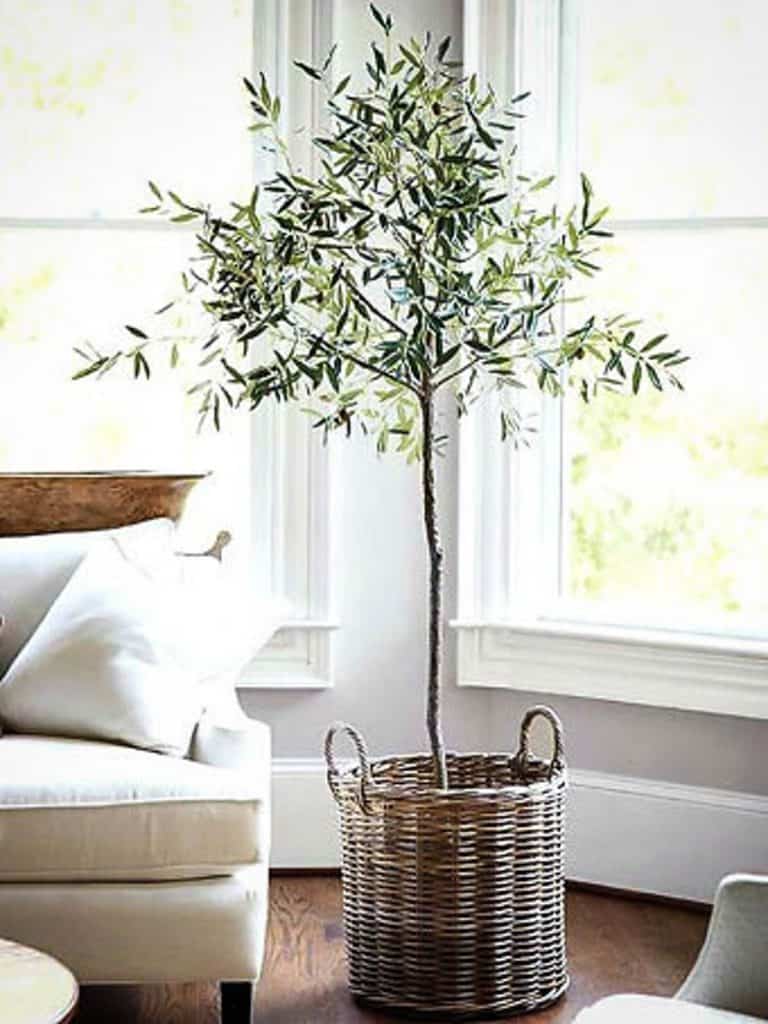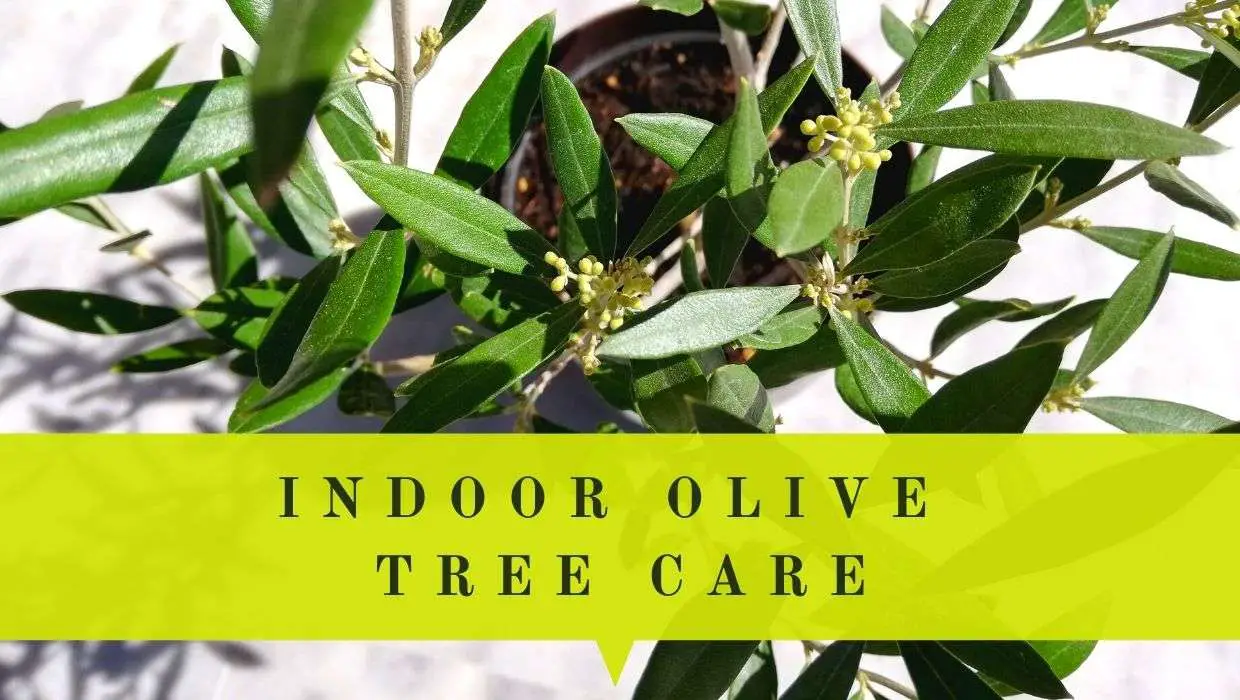Bringing the Mediterranean Indoors: Choosing the Right Olive Tree
When it comes to growing an olive tree indoors, selecting the right variety is crucial for success. With over 200 varieties of olive trees, choosing the one that thrives in indoor conditions can be overwhelming. However, by understanding the characteristics of different varieties, you can make an informed decision and bring a piece of the Mediterranean into your home.
Dwarf and compact varieties are ideal for indoor growing, as they are naturally smaller and more compact. These varieties, such as ‘Arbequina’ and ‘Koroneiki’, are perfect for small spaces and can thrive in containers. They require minimal pruning and can tolerate low light conditions, making them perfect for indoor growing.
Another important factor to consider when choosing an olive tree variety is its hardiness zone. Olive trees prefer warmer temperatures and can tolerate some frost, but they are sensitive to extreme temperatures. If you live in an area with cold winters, choose a variety that is hardy in your zone, such as ‘Frantoio’ or ‘Leccino’.
In addition to variety, consider the mature size of the tree and its growth habits. Some olive trees can grow quite large, so make sure to choose a variety that will fit in your indoor space. Also, consider the tree’s growth habits, such as its branching pattern and leaf density, to ensure it will thrive in your indoor environment.
By selecting the right olive tree variety for your indoor space, you can enjoy the beauty and benefits of this Mediterranean plant year-round. With proper care and attention, your indoor olive tree can thrive and provide a touch of elegance to your home.
How to Create a Sunny Oasis for Your Indoor Olive Tree
Replicating the Mediterranean climate indoors is crucial for the health and well-being of your olive tree. One of the most important factors to consider is lighting. Olive trees require bright, direct light to photosynthesize and thrive. If you’re unable to place your tree near a sunny window, consider using grow lights to supplement the natural light.
When choosing a location for your olive tree, consider the temperature requirements. Olive trees prefer daytime temperatures between 65-75°F (18-24°C) and nighttime temperatures around 55-65°F (13-18°C). Avoid placing your tree near heating or cooling vents, fireplaces, or drafty windows, as this can cause stress and damage to the tree.
Humidity is another important factor to consider when creating a sunny oasis for your indoor olive tree. Olive trees prefer a relatively low humidity environment, around 40-50%. You can use a humidifier to maintain the optimal humidity level, especially during the dry winter months.
In addition to lighting, temperature, and humidity, air circulation is also crucial for the health of your olive tree. Make sure to provide good air circulation around the tree by keeping it at least 6-8 inches away from any walls or surfaces. This will help prevent fungal diseases and promote healthy growth.
By replicating the Mediterranean climate indoors, you can create a sunny oasis for your olive tree to thrive. Remember to monitor the lighting, temperature, and humidity levels, and adjust as necessary to ensure the optimal growing conditions for your tree. With proper care and attention, your indoor olive tree can flourish and provide a touch of elegance to your home.
When it comes to how to care for olive tree indoors, creating a sunny oasis is just the beginning. By providing the right environment and care, you can enjoy the beauty and benefits of this Mediterranean plant year-round.
The Art of Watering: Finding the Perfect Balance
Watering is one of the most critical aspects of how to care for olive tree indoors. Overwatering can lead to root rot, while underwatering can cause stress and damage to the tree. To find the perfect balance, it’s essential to understand the watering needs of your indoor olive tree.
Check the soil moisture by sticking your finger into the soil up to the first knuckle. If the soil feels dry, it’s time to water. If it’s already moist, wait a few more days before watering again. This simple technique will help you avoid overwatering and ensure your tree receives the right amount of moisture.
When watering, make sure to water thoroughly, allowing excess water to drain from the pot. This will help prevent waterlogged soil and reduce the risk of root rot. Avoid getting water on the trunk or leaves, as this can cause fungal diseases and other problems.
The frequency of watering will depend on the climate, humidity, and temperature of your indoor space. As a general rule, water your indoor olive tree when the top 1-2 inches of soil feels dry. During the spring and summer months, you may need to water more frequently, while during the fall and winter months, you can reduce the frequency of watering.
It’s also essential to monitor the tree’s response to watering. If the leaves start to droop or turn yellow, it may be a sign that the tree is receiving too much or too little water. Adjust your watering schedule accordingly to ensure your tree receives the right amount of moisture.
By mastering the art of watering, you’ll be well on your way to creating a thriving indoor olive tree. Remember to monitor the soil moisture, avoid overwatering, and adjust your watering schedule as needed. With proper care and attention, your indoor olive tree will flourish and provide a touch of elegance to your home.
Fertilizing for Success: Feeding Your Indoor Olive Tree
Fertilizing is an essential part of how to care for olive tree indoors. Indoor olive trees require a balanced diet of nutrients to promote healthy growth and fruit production. Choosing the right fertilizer can be overwhelming, but by understanding the different types of fertilizers and their benefits, you can make an informed decision.
There are several types of fertilizers available for indoor olive trees, including synthetic and organic options. Synthetic fertilizers provide a quick release of nutrients, but can burn the roots if overused. Organic fertilizers, on the other hand, release nutrients slowly and promote healthy soil biota.
When selecting a fertilizer, look for a balanced formula that contains nitrogen, phosphorus, and potassium. A balanced fertilizer will promote healthy growth, fruit production, and root development. Avoid using high-nitrogen fertilizers, as they can promote leaf growth at the expense of fruit production.
The frequency of fertilization will depend on the age and size of your indoor olive tree. Young trees require more frequent fertilization, while mature trees require less. As a general rule, fertilize your indoor olive tree during the growing season (spring and summer) with a balanced fertilizer.
Some popular organic fertilizers for indoor olive trees include fish emulsion, bone meal, and compost tea. These fertilizers promote healthy soil biota and provide a slow release of nutrients. Avoid using chemical-based fertilizers, as they can harm the environment and contaminate soil and water.
By fertilizing your indoor olive tree regularly, you can promote healthy growth, fruit production, and root development. Remember to choose a balanced fertilizer, avoid overfertilization, and consider using organic options. With proper fertilization, your indoor olive tree will thrive and provide a touch of elegance to your home.
Pruning for Shape and Size: Maintaining Your Indoor Olive Tree
Pruning is an essential part of how to care for olive tree indoors. Regular pruning helps maintain the shape and size of the tree, promotes healthy growth, and encourages fruit production. By pruning your indoor olive tree, you can control its size, shape, and appearance, making it a beautiful and thriving addition to your home.
There are several reasons to prune your indoor olive tree, including removing dead or damaged branches, promoting healthy growth, and controlling the size and shape of the tree. Pruning also helps to increase air circulation, reduce disease, and encourage fruit production.
When pruning your indoor olive tree, use sharp, clean tools to avoid spreading disease. Remove any dead or damaged branches, and cut back any overgrown or leggy branches to maintain the desired shape and size. Make clean cuts just above a growth node, and avoid tearing the bark or leaving stubs.
The best time to prune your indoor olive tree is during the dormant season, usually in late winter or early spring. This allows the tree to heal quickly and reduces the risk of disease or pest infestations. However, if you need to prune your tree during the growing season, make sure to prune only what is necessary to maintain the tree’s health and appearance.
Some common pruning techniques for indoor olive trees include pinching, thinning, and reduction pruning. Pinching involves removing the tips of new growth to encourage branching and promote a fuller tree. Thinning involves removing select branches to allow more light and air to reach the remaining branches. Reduction pruning involves cutting back overgrown or leggy branches to maintain the desired shape and size.
By pruning your indoor olive tree regularly, you can maintain its shape and size, promote healthy growth, and encourage fruit production. Remember to use sharp, clean tools, prune during the dormant season, and avoid over-pruning, which can stress the tree and reduce its productivity.
Pest Control and Common Problems: Troubleshooting Your Indoor Olive Tree
Indoor olive trees can be susceptible to pests and diseases, which can quickly spread and cause damage to the tree. Regular monitoring and prompt action can help prevent infestations and ensure the health and well-being of your tree.
Common pests that can affect indoor olive trees include spider mites, mealybugs, and scale. These pests can cause damage to the leaves and stems, and can also transmit diseases. To control pests, use insecticidal soap or neem oil, and make sure to isolate the tree to prevent the pests from spreading.
Root rot is another common problem that can affect indoor olive trees. This is usually caused by overwatering, which can lead to the roots rotting and the tree becoming unstable. To prevent root rot, make sure to water your tree properly, and avoid getting water on the trunk or leaves.
Other common problems that can affect indoor olive trees include leaf drop, yellowing leaves, and a lack of fruit production. These problems can be caused by a variety of factors, including inadequate light, temperature fluctuations, and nutrient deficiencies.
To troubleshoot common problems with your indoor olive tree, start by inspecting the tree carefully. Look for signs of pests, diseases, or nutrient deficiencies, and take action promptly to address any issues you find. Make sure to provide your tree with the right conditions, including adequate light, water, and nutrients, and prune the tree regularly to maintain its shape and promote healthy growth.
By being aware of the common pests and problems that can affect indoor olive trees, you can take steps to prevent them and ensure the health and well-being of your tree. Remember to monitor your tree regularly, take prompt action to address any issues you find, and provide your tree with the right conditions to thrive.
When it comes to how to care for olive tree indoors, troubleshooting common problems is an essential part of maintaining the health and well-being of your tree. By being proactive and taking prompt action to address any issues you find, you can ensure that your tree remains healthy and thrives for years to come.
Repotting and Soil: Giving Your Indoor Olive Tree a Fresh Start
Repotting your indoor olive tree is an essential part of its care and maintenance. As the tree grows, it will eventually outgrow its container and require a larger pot to accommodate its expanding roots. Repotting also provides an opportunity to refresh the soil and provide the tree with a nutrient-rich growing medium.
When selecting a potting mix for your indoor olive tree, choose a well-draining mix that is specifically designed for olive trees. Avoid using regular potting soil, as it can retain too much water and cause root rot. A good potting mix should contain a combination of peat moss, perlite, and vermiculite, which will provide the right balance of moisture and drainage.
When repotting your indoor olive tree, choose a pot that is only slightly larger than the previous one. This will prevent the soil from becoming too wet and reduce the risk of root rot. Make sure the pot has good drainage holes to prevent water from accumulating in the soil.
To repot your indoor olive tree, start by gently removing the tree from its container. Inspect the roots and trim any that are circling or growing out of the container. Place the tree in its new pot and add fresh potting mix, making sure to leave enough space for the roots to grow.
After repotting, water your indoor olive tree thoroughly to settle the soil. Make sure to provide the tree with bright, indirect light and maintain a consistent temperature between 65-75°F (18-24°C).
By repotting your indoor olive tree regularly, you can provide it with a fresh start and promote healthy growth. Remember to choose the right potting mix, select a suitable pot, and avoid shocking the roots. With proper care and attention, your indoor olive tree will thrive and provide a touch of elegance to your home.
When it comes to how to care for olive tree indoors, repotting and soil selection are crucial components. By providing your tree with the right growing conditions, you can ensure its health and well-being for years to come.
Common Mistakes to Avoid: Tips for a Thriving Indoor Olive Tree
When it comes to how to care for olive tree indoors, there are several common mistakes to avoid. By being aware of these mistakes, you can take steps to prevent them and ensure the health and well-being of your tree.
One of the most common mistakes is overwatering. Indoor olive trees prefer well-draining soil and can be susceptible to root rot if the soil is too wet. Make sure to check the soil moisture regularly and avoid getting water on the trunk or leaves.
Another common mistake is underwatering. While indoor olive trees prefer dry soil, they still need regular watering to thrive. Make sure to water your tree regularly, but avoid overwatering.
Neglecting fertilization is another common mistake. Indoor olive trees need regular fertilization to promote healthy growth and fruit production. Make sure to use a balanced fertilizer and follow the instructions on the label.
Not providing enough light is another common mistake. Indoor olive trees need bright, indirect light to thrive. Make sure to place your tree near a sunny window or use grow lights to provide the necessary light.
By avoiding these common mistakes, you can ensure the health and well-being of your indoor olive tree. Remember to provide your tree with the right conditions, including well-draining soil, regular watering, fertilization, and bright light. With proper care and attention, your indoor olive tree will thrive and provide a touch of elegance to your home.
When it comes to how to care for olive tree indoors, it’s all about finding the right balance. By providing your tree with the right conditions and avoiding common mistakes, you can ensure its health and well-being for years to come.








:max_bytes(150000):strip_icc()/cdn.cliqueinc.com__cache__posts__278868__indoor-olive-tree-care-278868-1553648451393-product.700x0c-63c85f23677c4003a794a5b34df335c0.jpg)